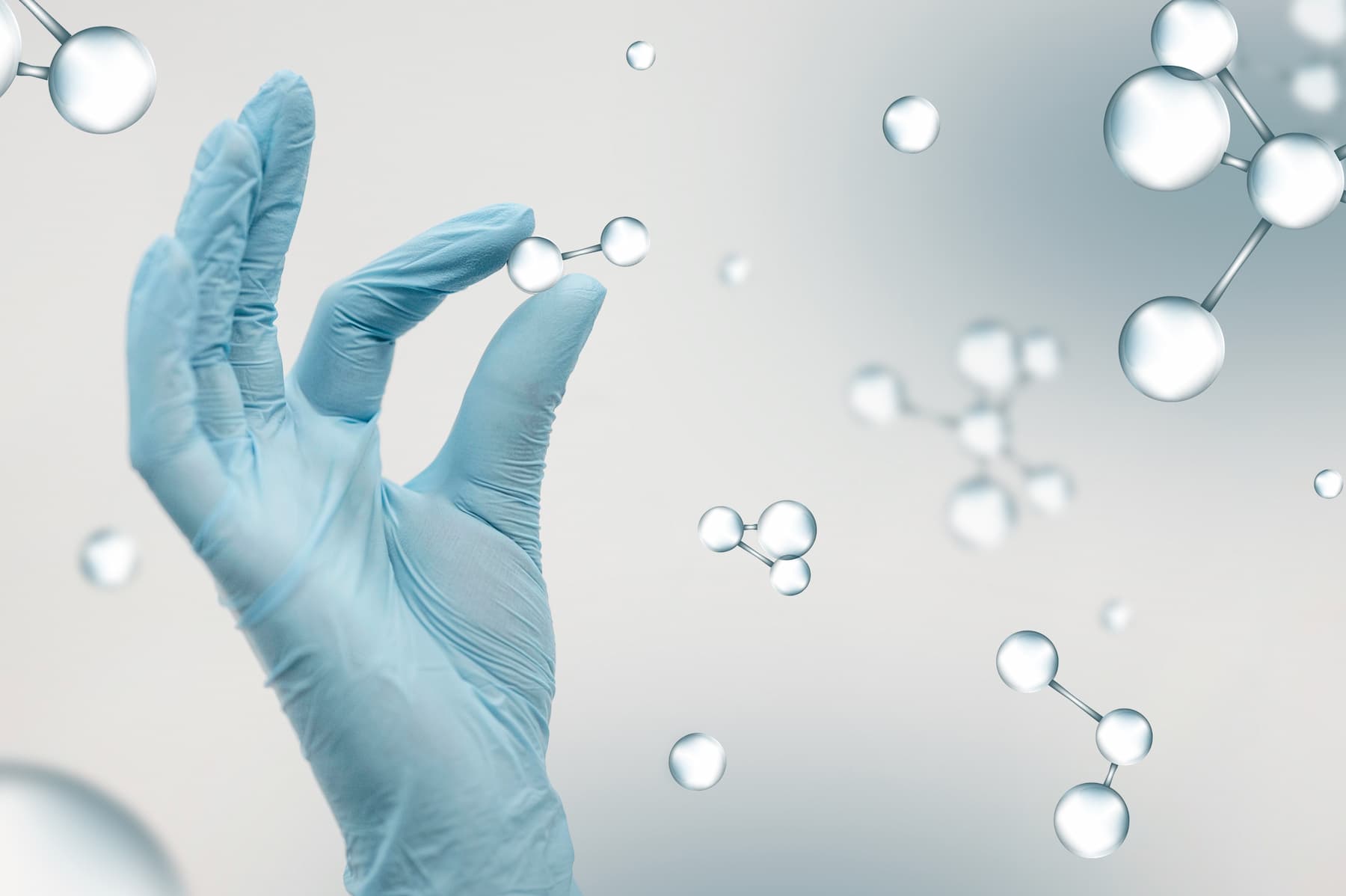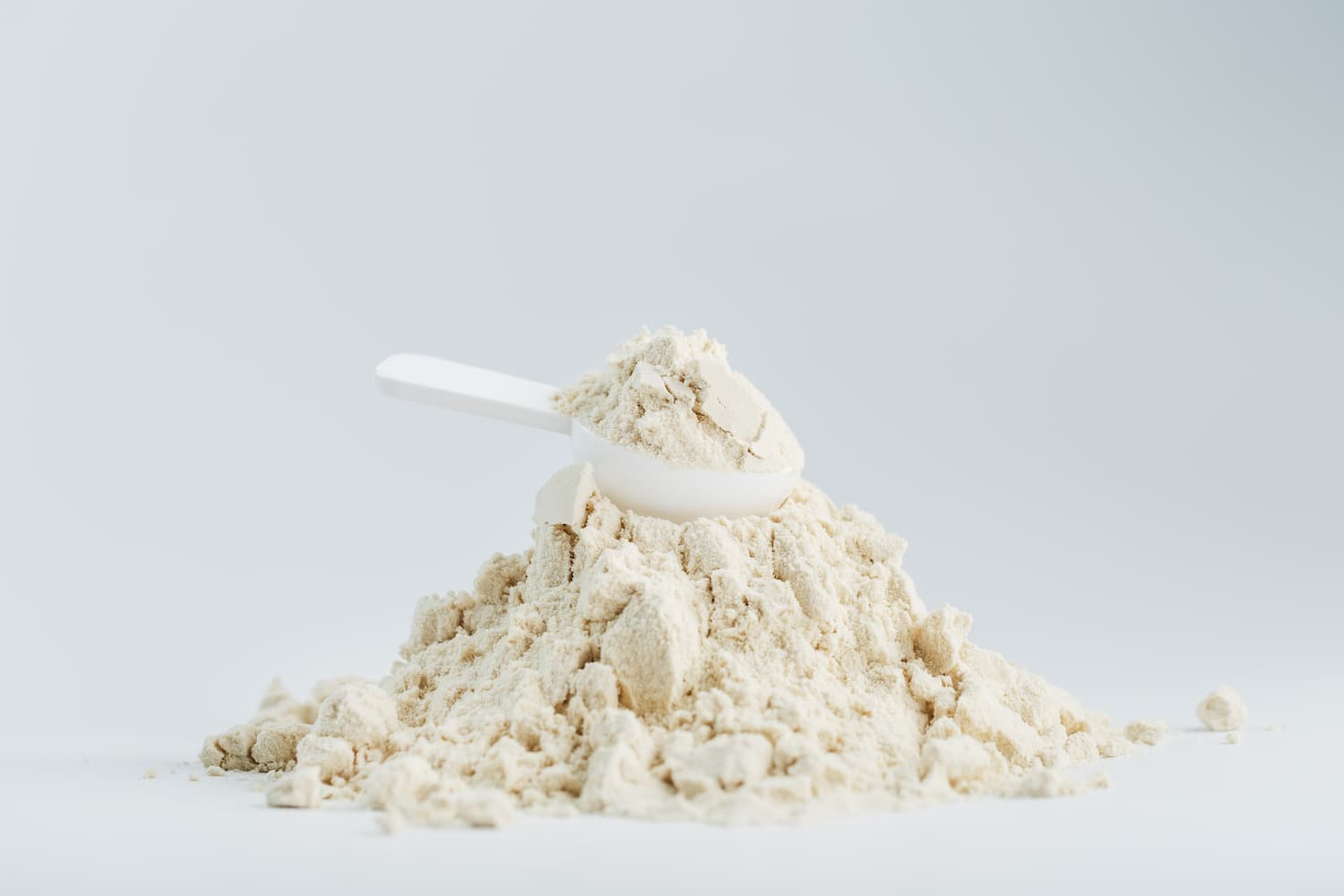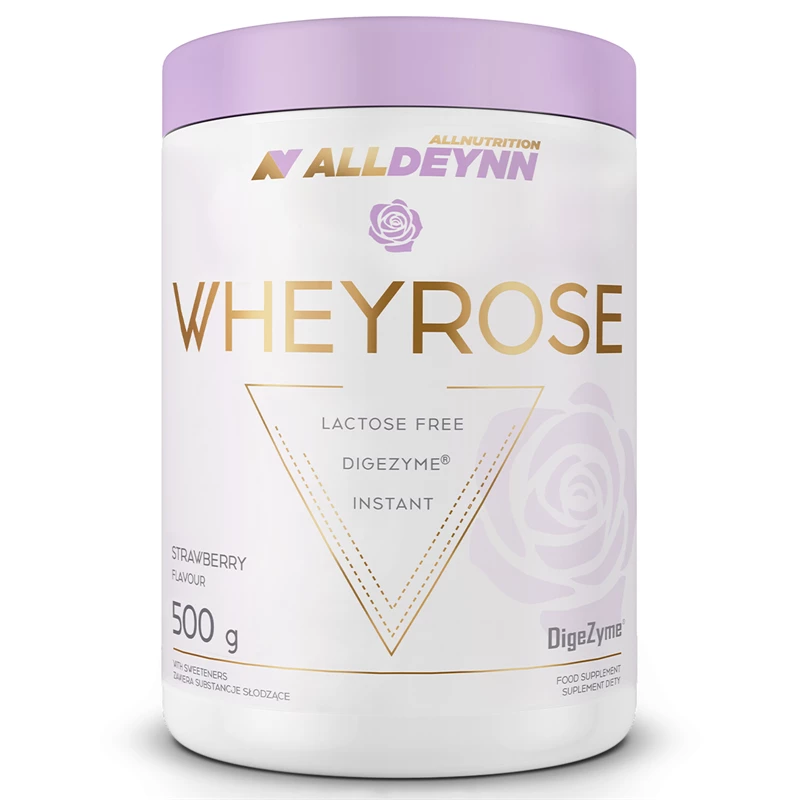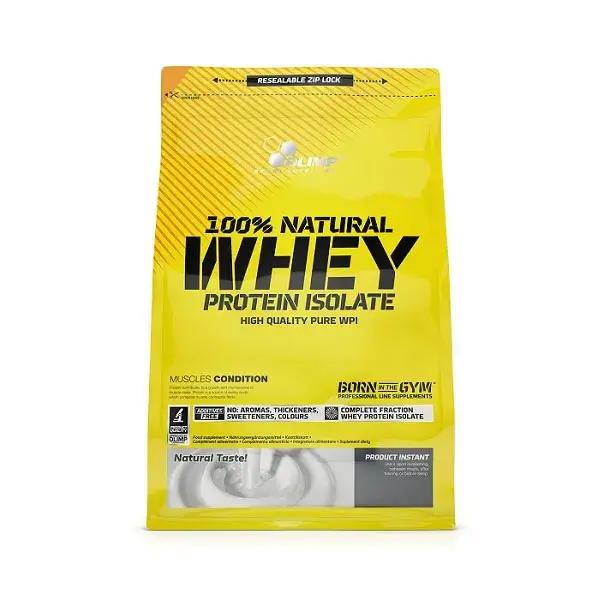Essential, endogenous, protein and other amino acids: what are they?
See what amino acids are, what role they play in the body and what properties they have.


Learn more about our editorial process
.

Learn more about our editorial process
.

Learn more about our editorial process
.

Learn more about our editorial process
.
Why you can trust us
Articles on Natu.Care are written based on scientific research, data from government websites and other reliable sources. The texts are written in cooperation with doctors, nutritionists and other health and beauty experts. Articles are reviewed before publication and during significant updates.
.Learn more about our editorial process
.Information about advertisements
Content on Natu.Care may contain links to products from the sale of which we may receive a commission. When creating content, we adhere to high editorial standards and take care to be objective about the products discussed. The presence of affiliate links is not dictated by our partners, and we select the products we review ourselves completely independently.
.Learn more about our terms and Conditions
.What does concrete have to do with the structure of the human body? No, the answer is not amino acids, although it is these that you are about to read about.
Do you know how concrete is formed? A bit like the human body. See: first, clay, limestone and marl (in the human body - amino acids) are combined. From these, cement (i.e. proteins) is formed. From the cement and a few other additives, concrete (tissues) is formed, and from it a concrete structure (your body) is cast.
Yes, I know it's a big oversimplification, but it shows well the role of the individual elements in the whole. Today we are taking the basis of the building block called the organism - the amino acids - under the magnifying glass.
Today we are taking the basis of the building block called the organism under the magnifying glass.
From this article you will learn:
- What amino acids are and what their structure is.
- What amino acids are.
- What types of amino acids there are and what properties they have.
- Whether there is an excess or excess of amino acids.
- Amino acid excess and deficiency are possible. .
- How to supply amino acids to the body. .
- Where are amino acids used. .
See also:
.- Proteins
- Vegetable protein
- WPC protein
- WPI protein
- PH protein .
- BCAA
- N-acetylcysteine (NAC) .
- Creatine
- Proline
- Casein
What are amino acids
.Amino acids, or amino acids, are organic chemical compounds. They are like microscopic jigsaw puzzles used to build different components. Usually when we talk about amino acids, we mean those that make up proteins (protein AAs), but amino acids can also make up hormones and even antibiotics (non-protein AAs)and.
Interesting fact
.Most amino acids have a sweet tasteand. It's hard to taste them, however, because they already form more complex substances in food.
Building amino acids
.Note, we are getting into the chemistry! The basic feature of amino acids is that they have two groups: an amino group and a carboxyl group, as well as a hydrogen atom and a side chain (to which different atoms or compounds can attach - depending on the type of amino acid in question). All this is linked by a carbon atomand.
I know, it's complicated. But imagine that an amino acid is a dinner. The carbon atom is the plate on which we will serve the food. To be able to eat you also need cutlery - it's a hydrogen atom. As in any decent dinner, a potato and a salad must land on the plate: a carboxyl group and an amino group respectively. And then there's the crux - the cutlet, or side chain.
You can have different types of dinner, depending on what your chop will be made of: fish, soya, pork, beetroot, eggs... In the same way, there are different types of amino acids, depending on what their side chain is made of.
General amino acid formula
.
Interesting fact
.Some sources state that there are more than 1,000 different amino acids in natureand.
Division of amino acids
.There are many ways in which we can divide amino acids. The basic criteria are:
- the ability of the body to produce them (exogenous, endogenous and relatively exogenous amino acids), .
- occurrence (protein and non-protein amino acids), .
- structure (branched-chain amino acids, basic amino acids, acidic amino acids, etc.), .
You will now see how the different types of amino acids differ and what properties they have. I will start the distinction with the most general divisions and get more and more detailed below.
Exogenous (EAA) and endogenous amino acids
.Your body can produce some amino acids on its own. Others you need to provide with food. Essential Amino Acids (EAA), like most vitamins, need to be taken in with food.
Essential Amino Acids.Nearly all proteins have a complete set of essential amino acids - they only differ in their amount..
 .
.
Marta Kaczorekclinical nutritionist and personal trainer
The exogenous amino acid group includes:
.- leucine, .
- isoleucine, .
- phenylalanine, .
- valine, .
- lysine, .
- methionine, .
- arginine, .
- tryptophan, .
Endogenous amino acids are instead synthesised by the body on its own. So you do not need to be concerned about their content in food. Examples of these amino acids are:
Interesting facts
Most plants and bacteria can produce all the amino acids they need on their ownand.
Properties of endogenous and exogenous amino acids
.The properties of endogenous and exogenous amino acids are actually the properties of all amino acids that occur in the human body. Amino acids act in many different ways and are involved in a myriad of processes at the metabolic and cellular level, so it is impossible to list them all (see below for more detailed information on how the different types of amino acids work).
Generally speaking, amino acids in our body are responsible forand:
- building protein structures, peptides, enzymes and hormones, .
- transport of oxygen and nutrients into cells, .
- metabolism of carbohydrates and fats, .
- regulation of insulin metabolism, .
- neurotransmission, .
- absorption of other amino acids, .
- absorption of nutrients and minerals, .
- regulation of endocrine metabolism, .
- regeneration of cells,
- protection of the organism against cancer, and
- protection of the body against oxidative stress, .
- supporting memory and concentration abilities, .
- providing energy for the body, .
- digestive processes, .
Additionally, some amino acids can also affect the cardiovascular system, for example by dilating blood vessels, resulting in lower blood pressureand.
Protein and non-protein amino acids
.Protein amino acids are simply those from which proteins are made. There are 20 of them, although some include three more in this group (selenomethionine, selenocysteine and pyrrolysine). Protein amino acids can be both endogenous and exogenousand.
Most of the time when you hear about amino acids, it is the protein ones that you are referring to.
. .|
Protein amino acids produced by the body: . |
Protein amino acids that need to be supplied to the body: . |
|
|
alanine |
phenylalanine |
|
|
cysteine |
histidine |
|
|
aspartic acid |
isoleucine |
|
|
glutamic acid |
lysine | |
|
glycine |
leucine |
|
|
asparagine . |
methionine |
|
|
proline |
arginine |
|
|
glutamine |
treonine |
|
|
serine |
valine |
|
|
tyrosine |
tryptophan |
Properties of protein amino acids
.All proteins in your body are made up of this group of amino acids. Protein amino acids therefore enable your internal organs to function properly, affect the density and elasticity of your skin, and enable your muscles to work properly and expandand.
Proteins are essential for the regeneration of tissues in the body, the synthesis of hormones, as well as the transport of oxygen to cells and their functioning in general. Proteins (and especially collagen) are the main building blocks of your bodyand.
People with certain medical conditions should limit their intake of certain protein amino acids. With maple syrup disease, watch out for leucine, isoleucine and valine. With phenylketonuria, one should be careful with phenylalanine, with tyrosinemia, one should be careful with tyrosine and with homocystinuria, one should be careful with methionine..
 .
.
Marta Kaczorek clinical nutritionist and personal trainer
Properties of non-protein amino acids
.Non-protein amino acids can support the synthesis of protein amino acids in the body. They also have important functions in metabolic processes, and some are natural antibioticsand.
Cycloserine is an example of an antibiotic that is a non-protein amino acid. It is produced by specific strains of bacteria.
According to some studies, it has been speculated that certain non-protein amino acids may be harmful to the human body: promoting the development of neurodegenerative diseases or disrupting insulin metabolism.
The following is an example of a non-protein amino acid.
This refers in particular to those compounds that resemble protein amino acids in structure. Our body can make them and incorporate them into proteins instead of protein amino acidsand.
Basic and acidic amino acids
.It would seem that since these are amino acids, they should all be acidic. But no, that would be too simple. Amino acids are mostly inert. This is because the carboxyl group is acidic and the amino group is basic, so they balance each other out.
However, some amino acids have additional carboxyl or amino groups in the side chain, making them basic (e.g. lysine and arginine) or acidic (e.g. glutamic acid and aspartic acid)and.
.Properties of essential amino acids
.Lysine is particularly important for the work of the immune system, as it is essential for the production of antibodies. It boosts immunity and inhibits the spread of certain viruses in the body (such as those that cause herpes)and.
Additionally, it aids collagen synthesis and facilitates calcium absorption, so may be particularly useful for those with calcium deficiencies .
Lysine is also a substrate in the production of L-carnitine, a substance responsible for fat metabolism and found in every 'magic' weight loss pill..
 .
.
Marta Kaczorekclinical nutritionist and personal trainer
Arginine instead plays a significant role in regulating fat and carbohydrate metabolism, which translates into insulin metabolismand.
Research suggests that essential amino acids (l-lysine and l-arginine) may regulate hormonal responses to stress, reducing symptoms of anxiety .
Properties of acidic amino acids
.Acid amino acids can be said to affect mood and brain function. They improve concentration, memory capacity and may contribute to reducing feelings of fatigue.
Research also suggests that aspartic acid may be related to testosterone concentrations in men, although it should be mentioned that the findings are not consistentand.
.Aspartic acid can cause an increase in testosterone, but in people who have low testosterone. However, it can also lead to an increase in prolactin, which is considered a bad side effect..
 .
.
Marta Kaczorekclinical nutritionist and personal trainer
Ketogenic and glucogenic amino acids
.Ketogenic amino acids are precursors of ketone bodies. In turn, ketone bodies are an additional source of energy for the body, used in crisis situations when our body cannot use glucose (e.g. during starvation). A ketogenic amino acid, for example, is lysineand.
Glucogenic amino acids are instead essential for glucose production. An example of a typical amino acid with exclusively glucogenic properties is glutamine. Some amino acids contribute to the formation of both ketone bodies and glucose. One such compound is phenylalanineand.
Properties of ketogenic amino acids
.The main function of ketogenic amino acids is to participate in the synthesis of ketone bodies. They enable the body to obtain energy from the breakdown of fats and thus contribute to the reduction of body fatand.
Properties of glucogenic amino acids
.Glucogenic amino acids provide a substrate that the body can convert into glucose when required. Glucose is the primary source of energy for our body. Therefore, an adequate amount of glucogenic amino acids is particularly important for those who exercise, as it gives energy for exercise and prevents catabolism.
This process involves using the proteins present in the muscles to meet an energy deficitand.
.Interesting facts
.Results from the 2020 study suggest that glucogenic amino acids may be one marker for earlier detection of certain cancers. However, more clinical work is needed at the molecular leveland.
Branched-chain amino acids (BCAAs)
.Branched-chain amino acids ( Branched-chain Amino Acid), or the popular BCAA among athletes, are amino acids with a more extended side chain. It branches off to be able to link several compounds together - hence their name.
.BCAA amino acids are leucine, isoleucine and valine, which must be supplied to the body from the diet. Dietary supplements with BCAAs are popular with athletes, especially those who want to support muscle buildingand.
.
Properties of branched-chain amino acids
.During intense exercise, when glucose is depleted, the body may start to draw energy from proteins. Everyone who cares about building muscle mass wants to avoid this.
BCAA amino acids stop the process of catabolism (i.e. the breakdown of proteins) and additionally promote anabolism - the formation of muscle tissue. That's not all. Branched-chain amino acids reduce the feeling of fatigue and promote muscle recovery after trainingand.
.They also improve muscle endurance and facilitate fat reduction. BCAAs also have an effect on the nervous system and can exhibit analgesic effectsand. However, it is important to note that taking supplements with BCAAs (i.e. only 3 of the 9 essential amino acids) is not sufficient to achieve muscle growth or full muscle recovery .
.High BCAA intake may be linked to the development of metabolic diseases. Studies show that BCAAs, or more specifically high amounts of them in the blood, are associated with insulin resistance..
 .
.
Marta Kaczorekclinical nutritionist and personal trainer
See also: BCAA - is it worth taking?
Sulphur amino acids
.It is exactly as you think - sulphur amino acids are those that contain sulphur in their side chain. Sulphur amino acids are:
- methionine, .
- cysteine, .
- homocysteine, .
- taurine, .
Properties of sulphur amino acids
.Methionine and cysteine are protein sulphur amino acids. They are responsible for the formation of keratin, the main building block of your hair and nails. Therefore, these compounds take care of the hair matrix and nail plates and influence their resistance to damage.
Additionally, sulphur amino acids help protect the body from oxidative stress as they are involved in the production of natural antioxidants, protecting cells from damage.
Sound cool? Before you start looking for information on how you can get these amino acids into your body in the highest possible amounts, know that there is another side to the coin. According to a 2018 study, limiting sulphur amino acids in animals' diets was associated with a longer lifespan and reduced susceptibility to various diseasesand.
However, similar studies conducted on humans are still lacking. Should we then be afraid of sulphur amino acids? No, because we need them to function properly. However, (as with everything) it is worth exercising common sense and moderation.
Other types of amino acids
.Chemically, there are other types of amino acidsand:
- hydrophobic and hydrophilic - depending on whether they repel water or not, .
- polar and non-polar - depending on what their side chain looks like, .
- aromatic - having aromatic compounds in their side chain, .
- aliphatic - otherwise chain-like, because instead of a central carbon atom, they have several carbon atoms connected by a chain.
Amino acid deficiency
.With a healthy, balanced diet amino acid deficiency is unlikely to threaten you. High-protein foods (both zoonotic and plant-based), are also necessarily rich in amino acids.
.People who, for health or material reasons, are forced to severely restrict products providing protein in their diets, vegans and vegetarians with poorly balanced diets, and people with inborn errors in amino acid metabolismand may be at risk of amino acid deficiency.
Kwashiorkor and Marasmus are diseases considered to be caused by protein deficiency, but also by caloric deficiency..
 .
.
Marta Kaczorekclinical nutritionist and personal trainer
The symptoms of amino acid deficiencies are not clear-cut and are very easily confused with deficiencies of other substances or symptoms of various diseases. An insufficient concentration of amino acids in the body can be indicated byand:
- problems with the digestive system, .
- decreased immunity, .
- poor mood and even depressive symptoms,
- depression.
- problems with concentration and memory, .
- disorders of fertility, .
- in children, also growth retardation, .
Protein deficiency can be investigated - a drop in albumin concentration below 3.5 mg/dl may be indicative of just such a condition..
 .
.
Marta Kaczorek clinical nutritionist and personal trainer
Amino acid excess
.Amino acids are considered safe - after all, we supply them to our bodies every day with food. Research suggests that we also tolerate them well in the form dietary supplementsand. However, even with these compounds it is possible to overdo it.
Amino acid excess is mainly possible as a result of inappropriate supplementation of these components and diets containing a lot of protein-rich foods (e.g. the Dukan diet, the ketogenic diet). Among the most commonly indicated symptoms of amino acid excess, areand:
- nausea, .
- abdominal pain, .
- vomiting, .
- diarrhoea, .
- problems with liver, .
- disorders of kidney function (so-called kidney stones), .
- increased oxidative stress, .
- increased irritability and even aggression, .
Another risk associated with excessive supply of a single amino acid to the body is disturbances at the metabolic level. Amino acids compete with each other for the carriers that transport them into cells. When one type of amino acid greatly outcompetes the others, it can crowd them out of metabolic pathwaysand.
This condition can result in an excess of metabolites of this amino acid and a deficiency of compounds formed from other amino acids (those that lost the battle for carriers). Amino acid imbalance in the body can have far-reaching health consequences, especially if it persists over an extended period of timeand.
Amino acids can also be a substrate in the production of glucose and acetyl-coenzymeA, both of which can be converted into fatty acids, which can translate into weight gain. This confirms the fact that it is possible to exaggerate the supply of protein in the diet and this is not indifferent to our body..
 .
.
Marta Kaczorekclinical nutritionist and personal trainer
Resources of amino acids in the diet
.Before you start looking around for dietary supplements containing amino acids, check how to enrich your diet with them. In the table below, you will find sources of essential amino acids, i.e. amino acids that the body cannot produce on its own.
Valine
Valine
Methionine
|
Amino acid |
Best sources in the diet (products) . |
|||||||
|
Leucine . |
Beef, pork, poultry, cod, dairy, soy, legumes, peanuts, almonds |
|||||||
|
Isoleucine |
Fish, poultry, eggs, cheeses, lentils, soybeans, nuts, seeds |
|||||||
|
Phenylalanine . |
Beef, beef, pork, poultry, legumes, fish, beans, nuts, sunflower and pumpkin seeds | Protein. |
||||||
|
Valine |
Beef, beef, pork, poultry, tuna, sardines, salmon, pumpkin (flesh and seeds), beans, lentils, soybeans, rice, sunflower seeds, flaxseed, pistachios, almonds, nuts | Valine | Valine | Valine | Valine | Valine. |
||
|
Lysine |
Cheese, cottage cheese, eggs, beef, halibut, salmon, tuna, soybeans, potatoes, beans, almonds, whole grain products
Lysine. |
|||||||
|
Methionine . |
Dairy, cottage cheese, eggs, pork, fish meat | Methionine. |
||||||
|
Arginine |
Beef, poultry, seafood, lentils, spinach, sunflower and pumpkin seeds, nuts, whole grain products |
|||||||
|
Tryptophan |
Sunflower seeds, tuna, cod, poultry, lamb, soybeans, mozzarella and cheddar cheese, cashew nuts, eggs |
|||||||
|
Histidine . |
||||||||
|
Treonine |
Poultry, pork, cottage cheese, milk, gelatin, wheat germ, eggs, lentils, sesame, whole grain products | Treonine. |
Application of amino acids
.The supplement market abounds with products filled to the brim with amino acids, as well as those that contain them in addition. Manufacturers not only serve us amino acids in the form of dietary supplements and oral nutrients. Protein building blocks are also available in cosmetic formulations.
Amino acids in strength training
.Amino acids and proteins are particularly popular with athletes and people looking to build muscle mass (because how much rice and chicken can you eat...). With intense exercise, indeed a supply of some amino acids can be beneficial.
It is also popular to consume higher amounts of protein during weight loss, which is related to the greater thermal effect of protein food..
 .
.
Marta Kaczorekclinical nutritionist and personal trainer
If, however, your physical activity is recreational and you don't aspire to be a gymnast a bull, a nutritious diet should suffice.
Both bodybuilders and intense exercisers appreciate amino acids forand:
- the effect on increasing muscle mass, .
- prevention of catabolism (taking energy from muscle proteins), .
- increased muscular endurance, .
- lower fatigue during training, .
- acceleration of fat reduction, .
For physically active people, supplementation with EAA -that is, all the essential amino acids that will most effectively support athletes' performance and regeneration.
See also: How much protein a day?
.Amino acids in cosmetics
.Some amino acids have the ability to bind water, which translates into their moisturising properties. They can also regulate the pH of the skinand.
Some studies also indicate that amino acid complexes contained in cosmetics may promote skin regeneration and have anti-inflammatory effects . However, it is important to bear in mind that some of the research is conducted on behalf of the companies that produce the cosmetics.
Interesting facts
.Cystine and cysteine are amino acids that can be used in perm formulations. Cysteine can also be added to cosmetics as a fragranceand.
The most common amino acids in skin care products are:
.- glycine - acts as a moisturiser and regenerator, .
- proline - as one of the main components of collagen it is thought to influence the synthesis of its fibres, .
- arginine - mainly used in cosmetics to relieve inflammation, .
- serine - strengthens the skin's natural hydrolipid barrier, .
- pyroglutamic acid (pidolic acid, PCA) - has a strong moisturising effect.
In hair care products it is common to find amino acids such as:
- cysteine - can help with excessive hair loss and stimulate hair to grow faster, .
- alanine - has properties that smooth and prevent static hair. .
Amino acids for hair, skin and nails
.It's not just cosmetics manufacturers who care about your appearance. The properties of amino acids are also appreciated by companies producing beauty-supporting dietary supplements. In products designed to improve the condition of the skin, you will most often find amino acids included in collagen peptides (e.g. proline).
If, however, you want to influence the appearance of your skin from the inside out, the simplest way is to take products that simply contain collagen. High-quality collagen supplements will give you the reassurance that you are supplying your body with a whole set of precious amino acids, combined into collagen peptides.
ALLDEYNN WHEYROSE
Product description
Protein supplement containing whey protein concentrate (WPC) with added digestive enzymesós. It digests well, is an easy and quick way to provide protein and can be consumed by people with lactose intolerance. It will work well not only as a stand-alone drinkóy but also as a tasty addition to shakesóy, dessertsóy, oatmeal or omeletóy.
WHEYROSE contains five digestive enzymes that help break down macromolecules into smaller components, so that the ingredients from food and the nutrient are absorbed even better. This minimises or even eliminates digestive discomfort. Such an addition is rare in protein supplements.
.Pros and cons
Protein supplement containing whey protein concentrate (WPC) with added digestive enzymesós. It digests well, is an easy and quick way to provide protein and can be consumed by people with lactose intolerance. It will work well not only as a stand-alone drinkóy but also as a tasty addition to shakesóy, dessertsóy, oatmeal or omeletóy.
WHEYROSE contains five digestive enzymes that help break down macromolecules into smaller components, so that the ingredients from food and the nutrient are absorbed even better. This minimises or even eliminates digestive discomfort. Such an addition is rare in protein supplements.
.Additional information
Protein supplement containing whey protein concentrate (WPC) with added digestive enzymesós. It digests well, is an easy and quick way to provide protein and can be consumed by people with lactose intolerance. It will work well not only as a stand-alone drinkóy but also as a tasty addition to shakesóy, dessertsóy, oatmeal or omeletóy.
WHEYROSE contains five digestive enzymes that help break down macromolecules into smaller components, so that the ingredients from food and the nutrient are absorbed even better. This minimises or even eliminates digestive discomfort. Such an addition is rare in protein supplements.
.User review
Protein supplement containing whey protein concentrate (WPC) with added digestive enzymesós. It digests well, is an easy and quick way to provide protein and can be consumed by people with lactose intolerance. It will work well not only as a stand-alone drinkóy but also as a tasty addition to shakesóy, dessertsóy, oatmeal or omeletóy.
WHEYROSE contains five digestive enzymes that help break down macromolecules into smaller components, so that the ingredients from food and the nutrient are absorbed even better. This minimises or even eliminates digestive discomfort. Such an addition is rare in protein supplements.
.ALLDEYNN VEGEROSE
Product description
A protein supplement made from five plant proteins enriched with acacia fibre, flaxseed, MCT oil and the probiotic-prebiotic complex LactoWise®. It is a synbiotic thatós stimulates the developmentóy and growth of beneficial bacteria in the gastrointestinal tract and shows a beneficial effect on the condition of the digestive system.
Pros and cons
A protein supplement made from five plant proteins enriched with acacia fibre, flaxseed, MCT oil and the probiotic-prebiotic complex LactoWise®. It is a synbiotic thatós stimulates the developmentóy and growth of beneficial bacteria in the gastrointestinal tract and shows a beneficial effect on the condition of the digestive system.
Additional information
A protein supplement made from five plant proteins enriched with acacia fibre, flaxseed, MCT oil and the probiotic-prebiotic complex LactoWise®. It is a synbiotic thatós stimulates the developmentóy and growth of beneficial bacteria in the gastrointestinal tract and shows a beneficial effect on the condition of the digestive system.
Expert opinion
A protein supplement made from five plant proteins enriched with acacia fibre, flaxseed, MCT oil and the probiotic-prebiotic complex LactoWise®. It is a synbiotic thatós stimulates the developmentóy and growth of beneficial bacteria in the gastrointestinal tract and shows a beneficial effect on the condition of the digestive system.
ALLDEYNN VEGEROSE
Product description
A protein supplement made from five plant proteins enriched with acacia fibre, flaxseed, MCT oil and the probiotic-prebiotic complex LactoWise®. It is a synbiotic thatós stimulates the developmentóy and growth of beneficial bacteria in the gastrointestinal tract and shows a beneficial effect on the condition of the digestive system.
Pros and cons
A protein supplement made from five plant proteins enriched with acacia fibre, flaxseed, MCT oil and the probiotic-prebiotic complex LactoWise®. It is a synbiotic thatós stimulates the developmentóy and growth of beneficial bacteria in the gastrointestinal tract and shows a beneficial effect on the condition of the digestive system.
Additional information
A protein supplement made from five plant proteins enriched with acacia fibre, flaxseed, MCT oil and the probiotic-prebiotic complex LactoWise®. It is a synbiotic thatós stimulates the developmentóy and growth of beneficial bacteria in the gastrointestinal tract and shows a beneficial effect on the condition of the digestive system.
Expert opinion
A protein supplement made from five plant proteins enriched with acacia fibre, flaxseed, MCT oil and the probiotic-prebiotic complex LactoWise®. It is a synbiotic thatós stimulates the developmentóy and growth of beneficial bacteria in the gastrointestinal tract and shows a beneficial effect on the condition of the digestive system.
Hair supplements and nails may instead contain sulphur amino acids. These are the basic building blocks of keratin, of which hair and nails are composedand.
Summary
.- Amino acids are the chemical compounds that make up proteins, hormones and even antibiotics. .
- There are many types of amino acids depending on their structure, properties and whether or not our body can synthesise them on its own.
- Amino acids are the chemical compounds that make up proteins, hormones and even antibiotics.
- Amino acids have a number of functions in our body: they transport oxygen and nutrients, influence brain and central nervous system function, improve immunity, influence metabolism and are essential for protein production.
- Both deficiency and excess of amino acids can be detrimental to health. However, by taking care to eat a balanced, healthy diet, we should not be at risk of either.
- Amino acid deficiency and excess can be detrimental to health.
- Amino acids are very popular among athletes and people building muscle mass. They are also widely used in cosmetics.
FAQ
.What do amino acids build?
.Amino acids form structures that are fundamental to the functioning of the body: proteins, important for tissue growth and repair, as well as enzymes and hormones. For example, amino acids such as leucine, isoleucine and valine build muscle proteins, which is crucial for maintaining strength and recovery after exercise.
What do amino acids give you?
.Amino acids are the building blocks of protein, essential for your body to function properly. Consumption of amino acids contributes to the growth and regeneration of tissues, including muscle. If you are physically active then their consumption, especially after training, can aid the regeneration process.
Amino acids also support the immune system, taking part in the formation of antibodies. They can also regulate metabolism and even affect mood, concentration and memory.
When to take EAA amino acids?
.Take EAA amino acids (exogenous amino acids) 20-30 minutes before your workout - they will provide your body with the necessary ingredients to build muscle tissue. You can also consume them post-workout to aid recovery and muscle growth.
Another beneficial time is in the morning on an empty stomach. During the night, there is a drop in amino acid levels in the body - taking EAAs upon waking up will help to quickly replenish these deficits. If you are training on an empty stomach, taking EAAs before training is recommended to protect the body from catabolism.
What is better BCAA amino acids or protein?
.Protein supplement will provide you with all the essential amino acids and will effectively promote the growth, maintenance and recovery of muscle mass. BCAA is an "incomplete" supplement, as using only 3 of the 9 amino acids will not effectively promote muscle growth or recovery.
Scientific research suggests that if you want to build muscle, you need to focus on providing all essential amino acids (EAAs), not BCAAs alone. Same for performance sports - you need more than valine, isoleucine and leucine alone to improve recovery and reduce fatigue. It is better to spend the money on a protein supplement or an EAA formulation.
Are amino acids healthy?
.Yes, amino acids are essential for your body to function properly. Their adequate concentration of amino acids supports immunity, muscle building and regeneration and mental capacity. However, in excess they can be harmful, so both when composing diet and consuming supplements exercise moderation and common sense.
What causes amino acid deficiency?
.Amino acid deficiency can be caused by inborn defects in metabolism, but is most common in people on diets starvation diets and in vegans and vegetarians who improperly compose their menus. Amino acid deficiencies may also affect people who, for health reasons, need to avoid products with a high protein content.
Can amino acids be overdosed?
.Yes, amino acids can be overdosed, and this increases the risk of various health problems. Excessive intake of amino acids can lead to nausea, vomiting, stomach pain and even poorer absorption of some other amino acids and their metabolites.
Sources
.See all
.Aliu, E., Kanungo, S., & Arnold, G. L. (2018). Amino acid disorders. Annals of Translational Medicine, 6(24), Article 24. https://doi.org/10.21037/atm.2018.12.12
.Amino Acid Deficiency-An overview | ScienceDirect Topics. (n.d.). Retrieved 8 September 2023, from https://www.sciencedirect.com/topics/medicine-and-dentistry/amino-acid-deficiency
Brosnan, J. T., & Brosnan, M. E. (2006). The Sulfur-Containing Amino Acids: An Overview12. The Journal of Nutrition, 136(6), 1636S-1640S. https://doi.org/10.1093/jn/136.6.1636S
Burnett, C. L., Heldreth, B., Bergfeld, W. F., Belsito, D. V., Hill, R. A., Klaassen, C. D., Liebler, D. C., Marks, J. G., Shank, R. C., Slaga, T. J., Snyder, P. W., & Andersen, F. A. (2013). Safety Assessment of α-Amino Acids as Used in Cosmetics. International Journal of Toxicology, 32(6_suppl), 41S-64S. https://doi.org/10.1177/1091581813507090
Datta, D., Bhinge, A., & Chandran, V. (2001). Lysine: Is it worth more? Cytotechnology, 36(1), 3-32. https://doi.org/10.1023/A:1014097121364
Diaz, I., Namkoong, J., Wu, J. Q., & Giancola, G. (2022). Amino acid complex (AAComplex) benefits in cosmetic products: In vitro and in vivo clinical studies. Journal of Cosmetic Dermatology, 21(7), 3046-3052. https://doi.org/10.1111/jocd.14544
Dong, Z., Sinha, R., & Richie Jr., J. P. (2018). Disease prevention and delayed aging by dietary sulfur amino acid restriction: Translational implications. Annals of the New York Academy of Sciences, 1418(1), 44-55. https://doi.org/10.1111/nyas.13584
Elango, R. (2023). Tolerable Upper Intake Level for Individual Amino Acids in Humans: A Narrative Review of Recent Clinical Studies. Advances in Nutrition, 14(4), 885-894. https://doi.org/10.1016/j.advnut.2023.04.004
Essential amino acids: Definition, benefits, and foods. (2019, January 21). https://www.medicalnewstoday.com/articles/324229
Glucogenic Amino Acid-An overview | ScienceDirect Topics. (n.d.). Retrieved 8 September 2023, from https://www.sciencedirect.com/topics/neuroscience/glucogenic-amino-acid
HOLEČEK, M. (2022). Side Effects of Amino Acid Supplements. Physiological Research, 71(1), 29-45. https://doi.org/10.33549/physiolres.934790
Hydrophobic and Polar Amino Acids. (n.d.). Retrieved September 7, 2023, from https://www2.chem.wisc.edu/deptfiles/genchem/netorial/modules/biomolecules/modules/protein1/prot13.htm
Jezova, D., Makatsori, A., Smriga, M., Morinaga, Y., & Duncko, R. (2005). Subchronic treatment with amino acid mixture of L-lysine and L-arginine modifies neuroendocrine activation during psychosocial stress in subjects with high trait anxiety. Nutritional Neuroscience, 8(3), 155-160. https://doi.org/10.1080/10284150500162937
Ketogenic Amino Acid-An overview | ScienceDirect Topics. (n.d.). Retrieved 8 September 2023, from https://www.sciencedirect.com/topics/neuroscience/ketogenic-amino-acid
Kłys, M.Sc. W. (2017, May 25). Branched-chain amino acids (BCAAs) in athlete supplements. National Center for Nutrition Education. https://ncez.pzh.gov.pl/aktywnosc-fizyczna/aminokwasy-rozgalezione-bcaa-w-preparatach-dla-sportowcow/
Melville, G. W., Siegler, J. C., & Marshall, P. W. M. (2017). The effects of d-aspartic acid supplementation in resistance-trained men over a three-month training period: A randomised controlled trial. PLOS ONE, 12(8), e0182630. https://doi.org/10.1371/journal.pone.0182630
Munro, H. N. (1978). Nutritional Consequences of Excess Amino Acid Intake. IN M. Friedman (Ed.), Nutritional Improvement of Food and Feed Proteins (pp. 119-129). Springer US. https://doi.org/10.1007/978-1-4684-3366-1_8
Narita, K., Nagao, K., Bannai, M., Ichimaru, T., Nakano, S., Murata, T., Higuchi, T., & Takahashi, M. (2011). Dietary Deficiency of Essential Amino Acids Rapidly Induces Cessation of the Rat Estrous Cycle. PLOS ONE, 6(11), e28136. https://doi.org/10.1371/journal.pone.0028136
Non-Protein Amino Acids in Human Disease. (2020, June 2). News-Medical.Net. https://www.news-medical.net/life-sciences/Non-Protein-Amino-Acids-in-Human-Disease.aspx
Rodgers, K. J. (2014). Non-protein amino acids and neurodegeneration: The enemy within. Experimental Neurology, 253, 192-196. https://doi.org/10.1016/j.expneurol.2013.12.010
Roshanzamir, F., & Safavi, S. M. (2017). The putative effects of D-Aspartic acid on blood testosterone levels: A systematic review. International Journal of Reproductive Biomedicine, 15(1), 1-10. https://www.ncbi.nlm.nih.gov/pmc/articles/PMC5340133/
Rubenstein, E. (2013). Chapter 29-Azetidine-2-Carboxylic Acid and Other Nonprotein Amino Acids in the Pathogenesis of Neurodevelopmental Disorders. In J. L. R. Rubenstein & P. Rakic (Ed.), Neural Circuit Development and Function in the Brain (pp. 539-545). Academic Press. https://doi.org/10.1016/B978-0-12-397267-5.00220-X
Smriga, M., Ando, T., Akutsu, M., Furukawa, Y., Miwa, K., & Morinaga, Y. (2007). Oral treatment with L-lysine and L-arginine reduces anxiety and basal cortisol levels in healthy humans. Biomedical Research (Tokyo, Japan), 28(2), 85-90. https://doi.org/10.2220/biomedres.28.85
Soda, K. (1987). Microbial sulfur amino acids: An overview. In Methods in Enzymology (Vol. 143, pp. 453-459). Academic Press. https://doi.org/10.1016/0076-6879(87)43080-2
Szlas, A., Kurek, J. M., & Krejpcio, Z. (2022). The Potential of L-Arginine in Prevention and Treatment of Disturbed Carbohydrate and Lipid Metabolism-A Review. Nutrients, 14(5), Article 5. https://doi.org/10.3390/nu14050961
Taherizadeh, M., Khoshnia, M., Shams, S., Hesari, Z., & Joshaghani, H. (2020). Clinical Significance of Plasma Levels of Gluconeogenic Amino Acids in Esophageal Cancer Patients. Asian Pacific Journal of Cancer Prevention, 21(8), 2463-2468. https://doi.org/10.31557/APJCP.2020.21.8.2463
Tesseraud, S., Coustard, S. M., Collin, A., & Seiliez, I. (2008). Role of sulfur amino acids in controlling nutrient metabolism and cell functions: Implications for nutrition. British Journal of Nutrition, 101(8), 1132-1139. https://doi.org/10.1017/S0007114508159025
Townsend, D. M., Tew, K. D., & Tapiero, H. (2004). Sulfur containing amino acids and human disease. Biomedicine & Pharmacotherapy, 58(1), 47-55. https://doi.org/10.1016/j.biopha.2003.11.005
Yoganathan, S., & Vederas, J. C. (2010). 5.02-Nonprotein l-Amino Acids. IN H.-W. (Ben) Liu & L. Mander (Ed.), Comprehensive Natural Products II (pp. 5-70). Elsevier. https://doi.org/10.1016/B978-008045382-8.00111-8
West Pomeranian University of Technology, Lecture 2, Amino acids and proteins. https://cbimo.zut.edu.pl/fileadmin/pliki/cbimo/grafika/Biochemia_TZ_-_wyklad_2_-_bialka_-_low.pdf
Laboratory in biochemistry FOR BIOLOGY, BIOTECHNOLOGY AND PROTECTION STUDENTS
The ENVIRONMENT Collective work edited by Antoni Polanowski, corrections to 3rd edition edited by Justyna Ciuraszkiewicz and Elżbieta Gocek http://www.biotech.uni.wroc.pl/wp-content/uploads/2014/09/2_Aminokwasy_X2015.pdf
Wolfe, R. R. (2017). Branched-chain amino acids and muscle protein synthesis in humans: Myth or reality? Journal of the International Society of Sports Nutrition, 14(1), 30. https://doi.org/10.1186/s12970-017-0184-9
Editorials
Meet the team



Vegan protein supplements add protein to the diets of athletes and non-athletes alike.

Look after the protein in your diet whether you are on a weight gain, weight reduction or weight maintenance.

Methionine is a little-known amino acid that is responsible for many functions in the body.



